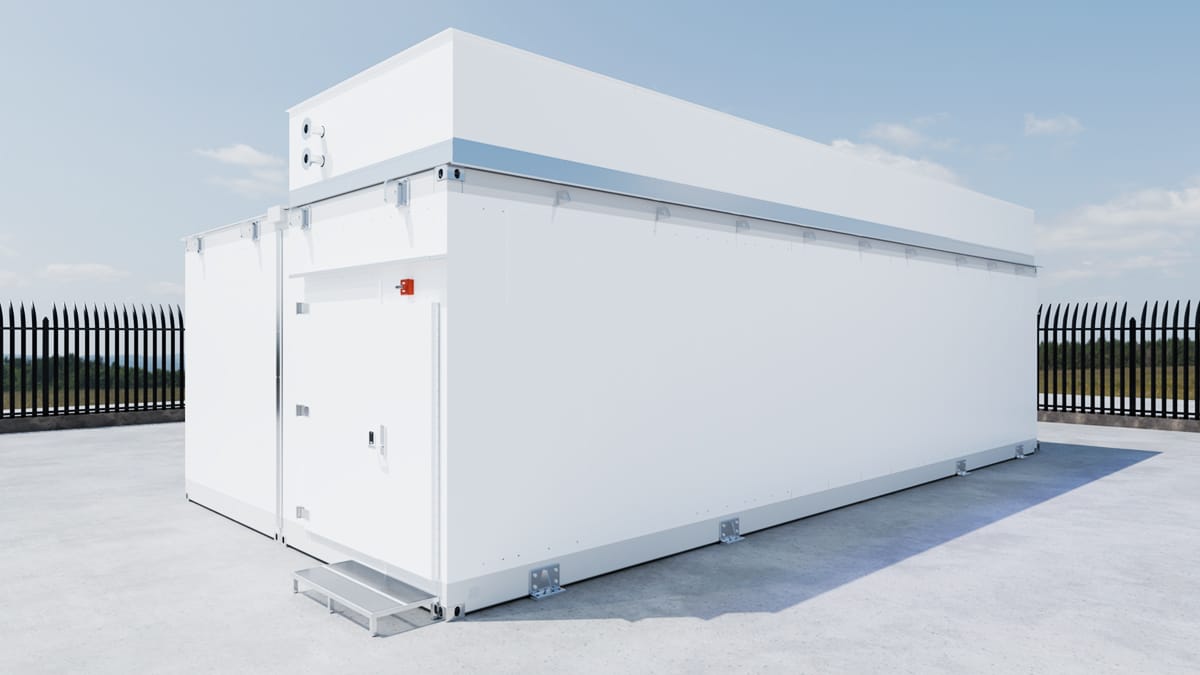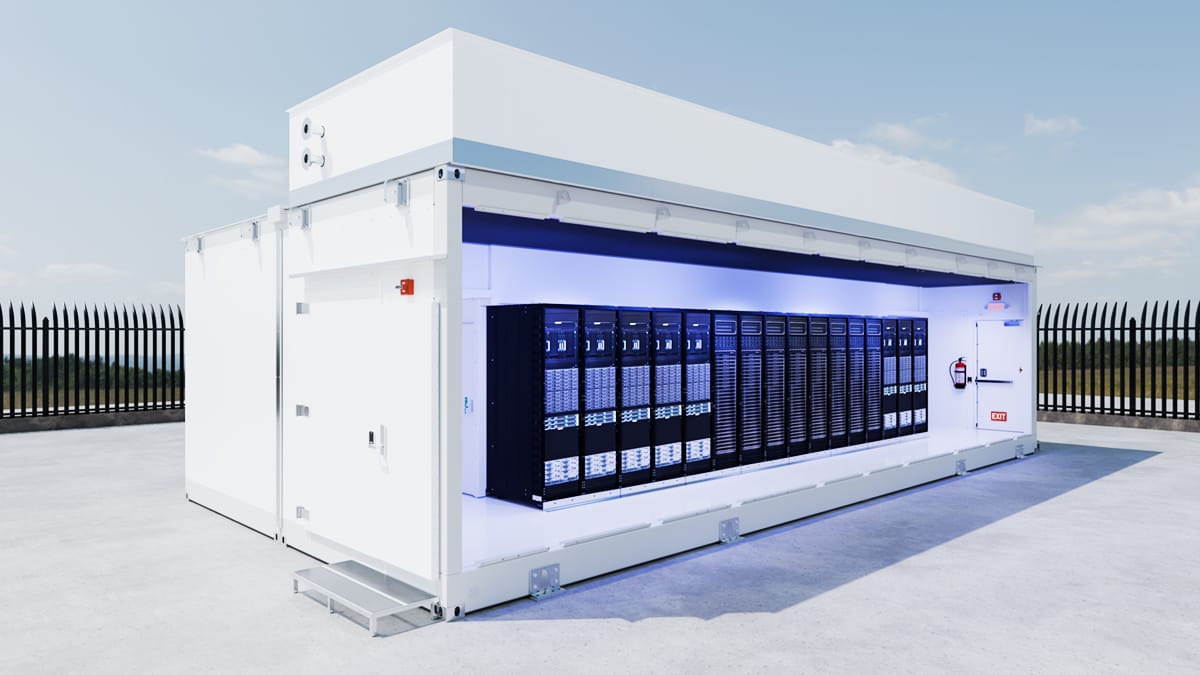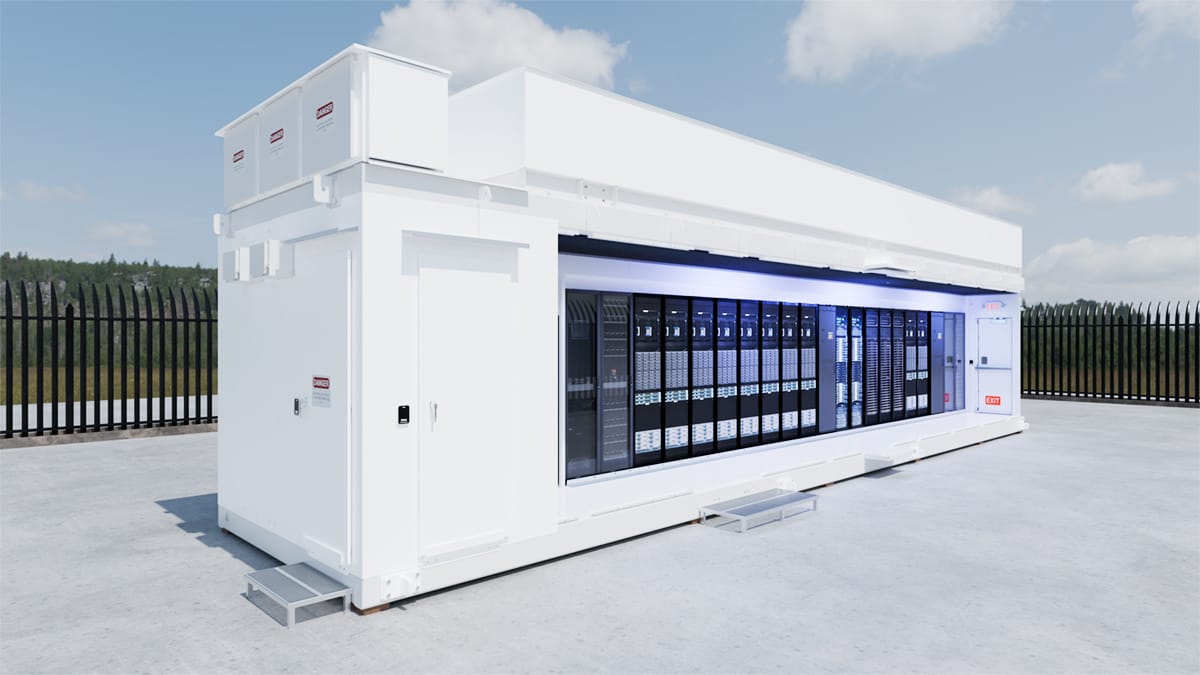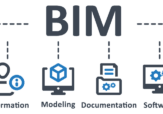Why Modular Data Centers Are Gaining Momentum

Ron Mann is Vice President of Compu Dynamics Modular.
AI is Driving the Next Frontier for Modular Construction
Modular construction has transformed several industries, including healthcare and education, delivering speed, cost, predictability, and quality through prefabrication. Now, it’s transforming one of the most demanding sectors: IT, or more importantly, data centers.
Artificial intelligence (AI), high-performance computing (HPC), and edge applications push the limits of traditional “stick-built” data centers. They take years build, often struggle with high density workloads, and aren’t optimized for deployments near end users. Modular data center (MDC) platforms are purpose-built to address these challenges, offering flexibility and scalability to adapt to evolving technologies, while opening new opportunities for the modular construction industry.

L Series Exterior view (utility, IT module and overhead cooling)

L Series cutaway view
What Makes a Data Center “Modular”?
Early MDCs have come a long way from repurposed shipping containers. While this choice offered a quick path to modularity, it was unable to support the full spectrum of IT infrastructure, especially Tier 3 or higher configurations, which require high availability and reliability.
Today’s MDCs are purpose-built in a factory setting to support specific customer applications. These units can arrive on-site, pre-tested and fully equipped with IT racks, power distribution, and cooling systems—ready for immediate deployment, and future upgrades as technology evolves. Key benefits of modular include:
- Faster schedules: Deployable in months, not years.
- Repeatable quality: Built in controlled, process driven factories, reducing onsite materials waste and workplace accidents.
- Scalable capacity: Units can be expanded, added, or reconfigured as demand grows.
- Optimized design: Modules can be tailored for customer specific applications and use cases.
Market Drivers
The rise of AI is accelerating demand for modular data centers across industries on a global scale. Factors that come into play include:
- Rising density – AI servers can draw 50–250+ kW per rack, exceeding legacy cooling capabilities.
- New cooling needs – Liquid and hybrid systems are essential for heat management.
- Latency demands – Real-time applications require compute closer to users.
- Time-to-market – Organizations can’t wait years for new facilities.
- Infrastructure agility – IT evolves rapidly, and infrastructure must keep pace.
In short, workloads are changing faster than traditional construction timelines can support.

I series exterior view (all in one module with overhead cooling system)

I series cutaway view
Two Platform Types Emerging
Compu Dynamics Modular (CDM) has developed two purpose-built platforms specifically tailored for AI workloads:
- Training/learning platforms are designed for ultra-dense compute clusters used in AI model training or HPC. These multi-megawatt systems often require liquid cooling and advanced power distribution.
- Inference platforms are smaller, self-contained units that can be deployed at the edge offering low latency for real-time decision-making, such as processing video feeds or running applications locally.
This shift reflects a broader trend: modular data centers are evolving from one-size-fits-all into specialized, application-specific solutions.
Use Cases for Modular Data Centers
The versatility of modular platforms is driving adoption in diverse settings. Take inference for example. As AI becomes more integrated into everyday operations, so does the need for compact, high-performance data centers that process information in real time. Inference modules analyze data—like video feeds or sensor inputs—on-site, enabling fast decisions without relying on distant cloud servers.
Here are examples of AI driven use cases where modular data centers can positively impact key industries:
- Autonomous vehicle R&D – Dense training clusters near testing grounds accelerate AI model development.
- Healthcare systems – Edge modules process imaging data (MRI, CT) locally, reducing latency and reliance on distant cloud centers.
- Media and entertainment – Streaming services deploy inference nodes in metro areas to bring content closer to consumers.
- Research and academia – Universities add modular pods to expand HPC capabilities without overhauling entire campuses.
These instances highlight how modular data centers extend the reach of modular construction into high-tech domains.
Key Design Considerations
For modular data center construction, several challenges stand out:
- Thermal management: At densities above 100 kW per rack, liquid cooling becomes essential. Modules must integrate plumbing and heat rejection systems efficiently and economically.
- Power distribution: High-density modules require specialized power distribution approaches and failover strategies.
- Site logistics: Site design and readiness, transport, assembly, and commissioning must be proactively planned to take full advantage of modular construction.
- Codes and standards: Electrical, mechanical, and safety codes vary by location. The UL2755 IT standard helps streamline compliance by reducing certain site-specific requirements used in traditional construction.
- Future growth: Designs must allow for expansion and technology refresh cycles without compromising capacity or uptime.
These issues are familiar to modular builders in other industries—tight tolerances, factory integration, and site coordination—but they take on added complexity in mission-critical environments.
Takeaways for the Modular Industry
Modular data centers are a natural extension of what modular construction already does well: deliver high-performance infrastructure quickly, reliably, and at scale. For firms exploring this market, here are three key insights:
- Speed, not cost, is a key driver. Just as modular schools or hospitals meet urgent needs, modular data centers address fast-moving demands in AI and digital infrastructure.
- Specialization matters. Platforms are evolving into distinct categories—dense training clusters and nimble inference nodes. Understanding these use cases will be key for construction partners.
- Integration is critical. Data centers rely on complex utility hookups (power, fiber, cooling, water). Successful projects hinge on seamless factory-to-site coordination.
Looking Ahead
As AI adoption accelerates and sustainability becomes non-negotiable, modular data centers will only grow in importance. For the broader modular construction industry, they represent both a challenge and an opportunity: a chance to apply prefabrication expertise to one of the most technically demanding infrastructure types working in tandem with IT hardware innovation.
The message is clear: modular construction isn’t just building schools, offices, or housing. It is increasingly building the digital backbone of tomorrow’s economy.
More from Modular Advantage
Resia: Breaking All the Rules
Resia Manufacturing, a division of U.S.-based Resia, is now offering prefabricated bathroom and kitchen components to industry partners. Its hybrid fabrication facility produces more precise bathroom and kitchen components (modules) faster and at lower cost than traditional construction. Here’s how Resia Manufacturing does it.
How LINQ Modular Innovates to Bring Modular To The Market in the UAE and Beyond
LINQ Modular, with an office and three manufacturing facilities in Dubai, is a modular firm based in United Arab Emirates. The company is on a mission: to break open the housing and construction markets in the Gulf Cooperation Council (GCC) area with modular.
ModMax: Redefining Modular Construction with Confidence and Precision
ModMax was born out of frustration—frustration with five persistent pain points in modular construction: Permitting bottlenecks. Production delays. Rigid designs. Disconnect between “the office” and the field. Lack of transparency and communication.
LifeArk: Disaster-Resilient Housing from Recycled Plastic and 100-year-old Technology
Wee compares LifeArk’s housing units to Yeti coolers, as they are built similarly. Each component takes 15 to 20 minutes to manufacture, has an R-value of 40, and includes molded slots and chases for wiring, plumbing, fire sprinklers, and other utilities.
Building the Future of Modular Edge Infrastructure
The edge data center market is expanding rapidly, driven by the surge in AI workloads, IoT adoption, and the need for localized compute power. In these environments, sustainability, scalability, and reliability are non-negotiable. Cooling is among the most complex challenges for operators—and one of the most decisive factors in long-term success.
Accelerating Light-Gauge Steel Construction: A Semi-Automated Digital Workflow for Off-Site Projects
For construction professionals, the message is clear. By adopting semi-automation and digitalization, companies can deliver projects faster, more accurately, and more profitably, while also building stronger collaboration across teams. The approach is not about replacing people with machines, but about empowering people with better tools and processes.
Supply Chain Innovation in Action: 5 Habits Every Modular Leader Should Practice
By applying these principles to supply chain practices — collaborative planning, strategic procurement, scenario modeling, digital tools, and transparent forecasting — construction leaders can build value chains that are not just efficient and agile, but truly innovative.
Exploring the Role of Modular Integrated Construction (MiC) in Advancing Circular City Principles – A Survey of Stakeholder Perspectives
The survey findings highlight the significant potential of Modular integrated Construction (MiC) in advancing the development of circular cities. By reducing costs, accelerating construction timelines, and minimizing waste generation, MiC offers a promising approach to sustainable urban development.
The Use of MS POLYMER™-Based Sealants and Adhesives in Modular Building
These products combine flexibility and elastic recovery with excellent adhesion to different substrates and have already shown their usefulness in traditional construction. Now it’s time for them to be put to use in the modular construction industry.
From BIM to Execution: Turning a “Pretty Picture” into a Single Source of Truth for Off-Site Construction
When implemented properly, BIM becomes the company’s digital backbone: connecting teams, standardizing information and transforming data into actionable insights. It is the key to achieving lean, predictable operations where all phases – design, planning, procurement and project execution are empowered by a single source of truth.










